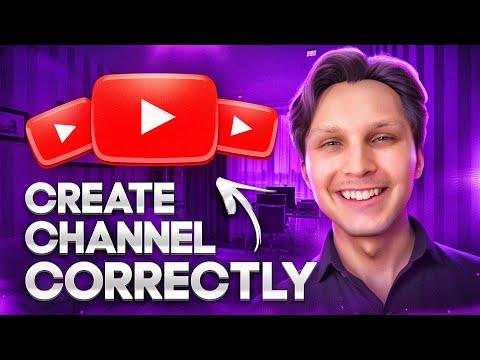Starting a YouTube channel seemed like an exciting yet daunting challenge. I remember feeling overwhelmed with the thought of launching my own channel, especially as a beginner in 2024. The vast world of YouTube was both inviting and intimidating, filled with seasoned creators who seemed to have it all figured out. I decided it was time to dive in and figure out the process for myself.
My journey began with the idea of sharing my passion for travel and adventure. However, I wasn’t sure how to translate that passion into a successful YouTube channel. I found myself grappling with questions like, “What kind of content should I produce?” and “How do I get started?”
The first step in creating my YouTube channel was to come up with a clear idea and purpose. I knew I wanted to focus on travel, but I needed to narrow it down further. After some brainstorming, I decided to create a channel dedicated to budget travel tips and destination guides. This focus would help me stand out and attract a specific audience interested in affordable travel options.
Next, I had to set up my channel. The process was quite straightforward. I logged into my Google account and navigated to YouTube. From there, I clicked on the user icon in the top right corner and selected “Your Channel.” I then clicked on “Create Channel” and followed the prompts to name my channel and add a profile picture. For my channel’s name, I chose something that reflected both my passion for travel and the budget aspect of my content.
Creating a compelling channel description was crucial. I wanted to make sure that anyone who stumbled upon my channel would immediately understand what it was about and why they should subscribe. I wrote a brief but engaging description about my focus on budget travel and what viewers could expect from my videos. Including relevant keywords in the description helped with search engine optimization (SEO), making it easier for people to find my channel.
The next step was to design a visually appealing channel art. I used free online tools like Canva to create a banner and logo that matched the theme of my channel. It was important for the channel art to be eye-catching and professional, as it would serve as the first impression for potential viewers.
With the channel set up, I needed to plan my content strategy. I researched other successful travel channels to understand what worked and what didn’t. I created a content calendar to organize my video ideas and scheduling. This helped me stay consistent and maintain a steady flow of content. I also decided to focus on a mix of content types, including destination guides, travel tips, and personal travel vlogs.
When it came to producing my videos, I started with basic equipment. I used my smartphone camera and a simple microphone to record my content. While the equipment was not top-of-the-line, it was sufficient for getting started. I learned the basics of video editing using free software like DaVinci Resolve. Editing was a crucial part of the process, as it allowed me to enhance the quality of my videos and create a more polished final product.
Uploading my videos to YouTube involved more than just hitting the “publish” button. I needed to optimize each video for searchability. I wrote detailed video titles and descriptions, included relevant tags, and created custom thumbnails that accurately represented the content of each video. I also made sure to add subtitles to make my videos accessible to a wider audience.
Promoting my channel was another important aspect of growing my audience. I used social media platforms like Instagram and Facebook to share my videos and connect with other travel enthusiasts. Engaging with my audience through comments and social media interactions helped build a community around my channel.
As I continued to create and upload content, I kept track of my channel’s performance using YouTube Analytics. This tool provided valuable insights into which videos were performing well, how viewers were finding my content, and what areas needed improvement. Analyzing these metrics allowed me to refine my content strategy and make data-driven decisions.
One of the biggest challenges I faced was staying motivated and consistent. It’s easy to get discouraged when growth seems slow, but I reminded myself of my ultimate goal and the reasons why I started the channel. I celebrated small milestones and used feedback from my audience to keep improving.
Over time, I began to see progress. My subscriber count grew, and my videos started gaining more traction. I learned that building a successful YouTube channel requires patience, persistence, and a willingness to adapt and learn. Each video was a step toward refining my craft and reaching a wider audience.
Creating a YouTube channel in 2024 was an incredible learning experience. It taught me the importance of having a clear vision, staying organized, and continuously improving. By following these steps and staying dedicated, I was able to turn my passion for travel into a thriving YouTube channel.
